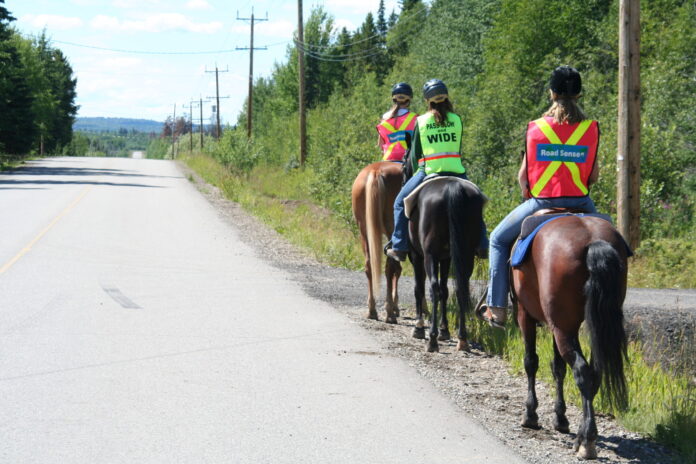As spring approaches and the weather begins to become nicer, the Back Country Horsemen of British Columbia are asking drivers to slow down when horses are on the road to keep everyone safe.
The group says that because of our urbanized society, many people are not used to seeing horses on the road getting from trail to trail.
BCHBC member Sharon Pickthorne says most of the time, things are okay. But, they have had more issues recently.
“It’s getting a little more difficult and I think that’s because we’re [Comox Valley] becoming a bigger city, we have people that have moved in that have no exposure to livestock whatsoever and they just don’t know,” said Pickthorne.
The situation between motorists and horses can be quite dangerous, according to Pickthorne, who says drivers and cyclists need to slow down for both their own and riders’ safety.
Horseback riders are considered vehicles under the Motor Vehicle Act, and they are required to follow the same laws as vehicles and bicycles.
“It’s spring, and horses tend to have more of a ‘spring in their step’,” she said. “We proceed along the road as we are supposed to do, we are considered to be a vehicle. A horse is a prey animal, so if they’re scared their first instinct is ‘I’m getting out of here.’ That’s not good for the rider or the motorist.”
She said drivers should slow down in order to prevent issues, and move into the other lane if possible when they see horseback riders.
“We try to provide signals to the motorists behind us so if we think we’re gonna have trouble, we’ll put out a hand signal and tell people to try and slow down,” she added. “Watch the rider, see what the rider is doing and if the rider looks like they’re having trouble, really slow down or put on your four-way flashers.”
Pickthorne also said cyclists can be more at danger because they are nearly silent on the road. Horses are more difficult to keep from getting spooked, and they are not easily trained to get used to vehicles.
According to the BCHBC, riders are responsible for “The Three C’s of Trail Riding Etiquette: Common Sense, Courtesy and Communication.”
Pickthorne said riders will wear high-visibility vests and helmets along with other gear to help keep themselves safe. She adds looking at the horse’s head and ears can also help predict what they will do.
She says taking the same approach to trail riding is also helpful for walkers and cyclists who may be out at Seal Bay and other areas in the Valley.






